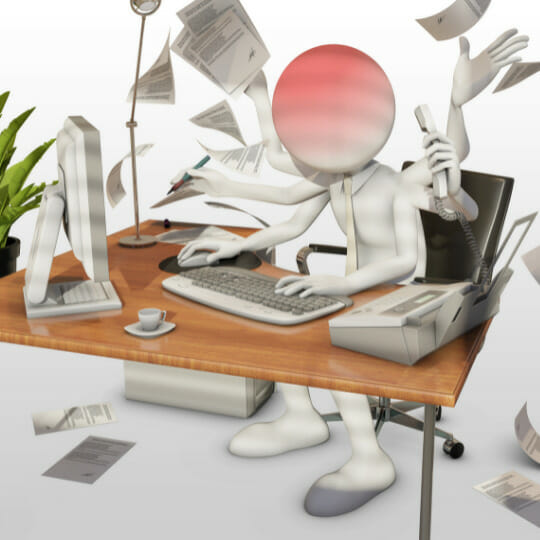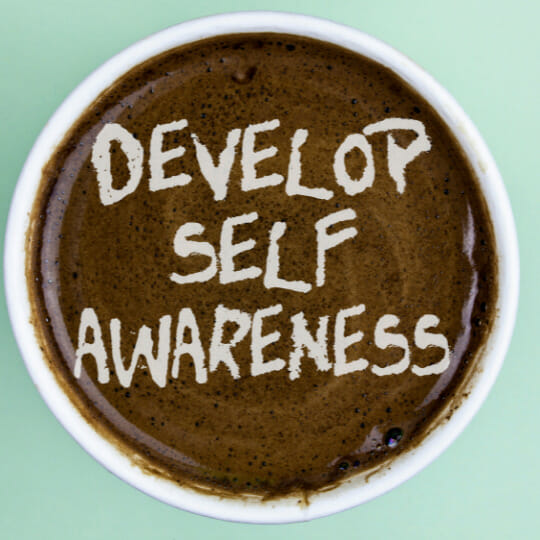
Have you been working at home, including supporting your clients or teams through mental issues, over the past two years? Let’s talk about some of the mental health impacts that people in supporting roles may face – burnout or rust out – so you can understand and identify these two elements that have the potential to impact your role as a leader, manager, mentor or coach.
This is the first in a series of conversations I’d like to have with you about understanding burnout and anxiety, and how to recover and build resilience.
These are such important topics because our working world has been turned upside down and this has impacted our mental health – and let’s face it – our mental health underpins both our personal and professional success.
Over the past two years, we have seen significant changes in both working conditions and the mental health of workers and business owners.
If you are an employee, or if you are a manager leading customers or teams, your daily role has invariably expanded to include dealing with other people’s emotional challenges.
If you are a business owner and especially those in coaching businesses, it’s been more than just business as usual – you have faced a multi-pronged challenge of running your business while supporting your clients through greater than usual mental health challenges related to lockdown, homeschooling, isolation, separation, loss of income, grief and the consequent depression and anxiety.
On top of this, all of us have been dealing with our own emotional and situational challenges that potentially lead to mental health issues like anxiety or burnout.
In simpler terms, it’s difficult to support others when your cup is empty.
It’s hard to be an effective listener, leader and coach if you are struggling with anxiety.
It’s hard to think clearly and make decisions if you’re overwhelmed.
It’s difficult to be effective if you have lost purpose and direction.
We need to understand what’s going on so we can deal with things more effectively and thrive in spite of what is going on around us.
We all recognise the risks of burning out in such circumstances, but there is also the risk of something called ‘rust out’.
At a simple level, we can describe burnout and rust out in terms of the number of challenges being faced, versus the resources we have available to meet those challenges.
In the case of burnout, you may be facing substantial challenges but few resources to cope.
Consider the effect of the pandemic. So many people are dealing with more stress, grief, and isolation above and beyond what we they normally experience, or maybe in roles where there are high levels of physical and/or emotional demand.

Examples might include mental health counsellors who are trying to cope with an increase in emotionally challenged calls or clients, or on the other hand, there businesses that are thriving in the pandemic and may be working long hours, struggling to keep up with demand.
In either case, workers may eventually lose the energy or ability to meet those demands, and this puts them on the road to burnout.
And the result?
Chronic and excess stress that leads to a sense of overwhelming exhaustion, feelings of cynicism and detachment, a sense of ineffectiveness, and a lack of accomplishment (professional efficacy) (1). These are the hallmarks of burnout.
Compare that with its’ opposite, rust out, where you may be facing few challenges but have plenty of resources to cope.
Consider again, the effect of the pandemic. Perhaps your work has dried up to the point where you have very little to do, and you’ve started clock-watching at 10am. Perhaps your career prospects have dwindled and you’re doing mostly menial work, shuffling papers and attending endless meetings.
The result?
You may become bored, disheartened and directionless. Your day feels monotonous, and you are developing a sense of dissatisfaction with a career. You are also at risk of anxiety – a sense of – where is this all heading? – or depression.
It’s pretty clear that your ability to identify the risks and warning signs of either burnout or rust out means you can adjust, course correct, and stay on top of your mental health and thrive, in spite of what is going on around you.
In various studies, burnout risk factors are cited as gender, age, tenure and occupation, but there is variability in each of these.
Generally, though, burnout seems to affect all industries and since the pandemic, it has occurred on a larger scale.
In a report by Microsoft, interviews with 9,600 frontline workers revealed that some workers reported feeling an increased sense of connection with co-workers due to shared stress from the pandemic, but many felt underappreciated by supervisors and that lack of communication had contributed to their burnout.
Further, 51% of non-management position frontline workers did not feel valued and wanted help to address physical exhaustion and mental health.

In the mining industry in Western Australia, a pre-pandemic (2018) survey of fly-in, fly-out (FIFO) workers showed that 1/3 of workers surveyed experienced high or very high feelings of anxiety and depression, and burnout was significantly higher for FIFO workers than the benchmark group.
Within the FIFO-based occupations of all mining employees, the highest risk groups were 30 – 34 and 40 – 44 years of age, with eight people per week taking their lives in Western Australia.
Other factors contributing to burnout in FIFO workers higher workload, high job demands, reduced engagement, and work-family conflict (which had a negative impact).
Burnout was found to be detrimental to safety compliance, contributing to more accidents and unsafe behaviours.
The most influential resources for burnout were social support, leadership and a positive safety culture, good management skills and reasonable job demands.
Looking at these two specific occupations, it’s clear that burnout is more than just about the demands of the job. It’s as much about isolation, loneliness, relationships and leadership.
There are many strategies to avoid, manage and reduce burnout and rust out.
I will cover many of those in future articles, but for now, I would like to quote my colleague and friend, David Carroll, a Trainer and Leadership Consultant who has extensive experience in this area.
David says:
“It’s important to differentiate between regular work-related stress and the state of being burned out. Stress is usually temporary and easily overcome. Stress is usually short-lived or tied to a specific goal. And when that goal is accomplished, the stress usually goes away.

On the other hand, burnout is an extended period of stress accompanied by emotional changes. Burnout is a long-lasting condition that may need the help of a professional to treat. Regular stress, on its own, is not harmful. Burnout is damaging to both the individual who feels the burnout and those involved in that individual’s life.
Developing your self-awareness and establishing coping mechanisms are the keys to building resilience, replenishing your energy reserves and regaining your passion and purpose in life. It’s all about establishing a healthy business mindset, healthy business body, healthy business relationships and healthy business development tools.”
The past two years of the pandemic have thrust change in the way we work and have exposed us to greater, chronic stressors.
Today, we talked about how changes at work may add to the intrinsic mental health risks we face at work and could result in burnout or rust out.
Burnout is a situation of lacking resources to cope with too many challenges, leading to overwhelming exhaustion, feelings of cynicism and detachment, a sense of ineffectiveness, and a lack of accomplishment (professional efficacy).
Rust out is a situation where your work has diminished and/or become menial, resulting in a sense of boredom, monotony and dissatisfaction which may lead to anxiety and/or depression.
We know that healthy relationships, supportive leadership, and personal care are critical to resolving both of these. I look forward to diving into those topics in the coming episodes.
Understanding who you are and what you need will allow your business to thrive! If you’re truly ready to break old habits and get out of the rut I encourage you to check out the Habitology membership.
Learn more here: